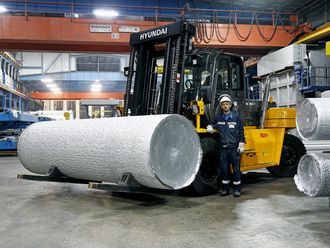London: New-build property prices in parts of London are poised to rise rapidly, according to new research, as regeneration and new transport links make previously unloved areas more attractive to investors.
In its report on London Hotspots: Residential development opportunity areas, agent Knight Frank claims that certain areas of the capital undergoing major infrastructure improvements will see new-build property prices rise by more than 30 per cent between now and 2016.
Highest price growth is predicted for Nine Elms, in south-west London, where agents suggest residential prices could rise by as much as 140 per cent, to £1,800 (Dh10,260) per square foot.
Their projections are based on the opening of the new US embassy in 2017 — which is expected to transform the area's identity — and the extension of the London Underground's Northern Line.
Other areas attracting attention include the City of London, where new developments are expected to achieve prices of £2,000 per square foot — and an increase of 118 per cent. This part of the capital has seen an influx of wealthy residents in the past five years, with demand likely to be sustained by the development of a new station at nearby Whitechapel, providing better transport links. Infrastructure improvements over the next few years are now the key to growth, says Liam Bailey, head of residential research at Knight Frank. He cites Crossrail — the line serving the new Whitechapel station — as potentially having most impact when it opens in 2018.
Protecting assets
Similar "hot spots" include Hammersmith in west London, Marylebone and Fitzrovia near Oxford Street, and Earl's Court and White City in west London.
"There's no doubt that a growing number of people are looking to protect their wealth in stable property assets such as new-build property, which provide a long-term return," says Nigel Lewis, property analyst at PrimeLocation.com.
"There's also the added dimension of wealthy overseas buyers and institutions who find investment in London particularly attractive, but we're also hearing anecdotally about the return of the British buyer to the London market."
But returns from the new-build market in London are still a far cry from the boom years when developers offloaded projects to investors willing to bulk buy "off plan" — sometimes years before the first brick was laid — with the aim of selling on before the end of the build.
Since then, investors have been wary. Sales of new investment properties have been in decline since 2007 when the property bubble burst — and it was new-build apartment prices that fell the furthest and fastest. With the withdrawal of mortgage finance by risk-averse lenders, empty dev-elopments were left to languish as new-build fell out of favour.
Even if there is a sharp pick-up in planning consents and building, agents argue that developers will struggle to eradicate the current implied 42 per cent shortfall in housing.
— Financial Times












